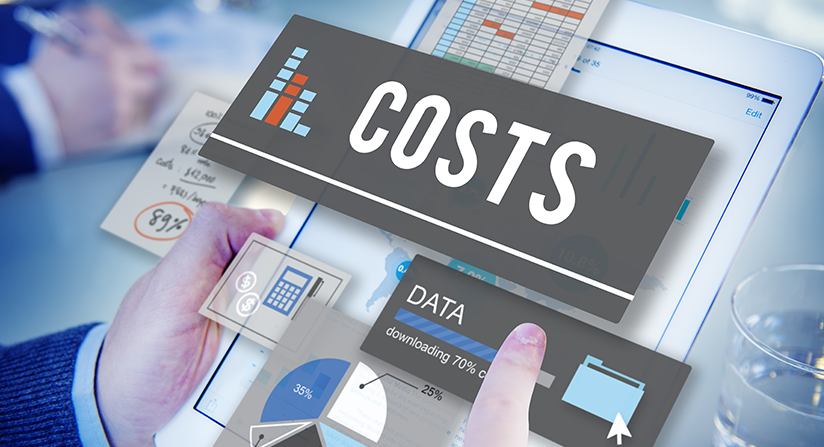What is Job Costing?
Job Costing is how much it costs to complete a job. It is used in manufacturing for custom orders. Getting job costing right is key to knowing how much to charge a customer and make a fair profit.
How Do You Calculate Job Costs?
There are four things to consider when calculating the cost of a job. You’ll only want to consider those costs that are directly related to making the product.
1. Determine Direct Material Costs
Direct material costs include all the raw supplies you need to make the product. You do not want to include anything that is considered overhead or an indirect cost, such as the machine used or the electricity to run the machine.
2. Determine Direct Labor
The direct labor costs are for the time workers spend making the product. Only include those people that were directly involved with the manufacturing. Do not factor in managers or supervisors.
3. Determine Overhead Rate
Overhead is made up of indirect expenses and is harder to calculate. Costs involved in overhead could include the cost of equipment, utilities, supervisor salary, etc. Sometimes businesses calculate the overhead rate by taking the total overhead costs and dividing them by an activity driver, such as labor hours or equipment hours.
For example, if you had $6,000 in overhead each month, and your shop floor employees worked 1,300 hours for the month, you would divide $6,000 by 1,300 to get $4.62 per labor hour for the overhead rate. Once you know how much labor you will need, you can add the overhead rate for each hour of labor. Sometimes businesses use a flat rate, or a predetermined rate, to charge for overhead.
4. Combine Totals
To get the total job cost you add the amounts you calculated in steps 1-3 together. That will provide you with the estimated total cost for the job.
What is Process Costing?
Process costing is used in manufacturing when identical (or nearly identical) units are mass-produced. For instance, let’s say a company manufactures 10 types of lamps. Each type could be calculated with process costing and if some lamps are very similar, but just have different colored bases or shades, then those lamps could use the same process costs.
How Do You Calculate Process Costs?
1. Weighted average costs
As an example, let’s use a company that manufactures laptops in large quantities. Several operations may be completed in different departments. The first department would determine the processing costs for a month by taking the direct costs and dividing that by the number of units produced. Below is an example of 10,000 laptops produced in a month.
Direct materials $200,000 ÷ 10,000 units = $20.00
Conversion costs: $275,000 ÷ 10,000 units = $27.50
These costs would be sent to the next department to calculate its processing costs and add them to the first department’s costs. And then the last department would calculate its processing costs to add to the combined costs from the first and second departments for the total process cost.
2. Standard costs
Companies use standard costs when they produce large quantities and it is challenging to capture information on the actual costs. They substitute an expected cost for an actual cost. When a product’s run is complete, the difference in the estimated vs. actual cost is listed in a variance account.
3. FIFO (First In, First Out)
The FIFO method moves the cost of beginning work-in-process to the cost of units transferred out. It distributes the costs added during the period first to the cost of units transferred out and then the remainder to the cost of units in the ending work-in-process. This method takes the most steps to calculate.
The Difference: Job Costing vs. Process Costing
The difference between job costing and process costing is that job costing is used for custom products, and process costing is used for mass-produced items that are the same or similar. Job costing tracks all direct and indirect costs for each item or project. Process costing doesn’t need to track each item, since they are the same. Instead, it looks at direct costs, those that are directly incurred in production, and indirect costs, those that aren’t directly involved, but still need to be considered, such as facility rent.
Ensuring Job Costing Profitability
To be successful with job costing, you need to have good accounting and control. You’ll want to be sure you know exactly what your expenses are before assigning them to a product. It’s best to have an accounting system that supports direct material, labor, and overhead costs. It will help you identify which projects are most profitable and by how much. That information can be used to make smart decisions about the company’s focus and what products make the most sense to manufacture.
1. Allocate Spending
Your accounting department can help to identify different projects and code expenses as needed. For instance, you may manufacture two products that have different costs, but both may use an item or material in production that is identical. Instead of purchasing the material for each product separately, it may be allocated for both products on a single purchase order. You’ll also need help from operations and project managers to identify costs not found in financial records.
2. Divide Overhead
Overhead should be divided between projects as it doesn’t apply to just one project. You may disperse it across projects, or by the amount of labor required for each. Usually, the latter approach is more accurate. For instance, if you have one project that takes much longer to handle than the other, it wouldn’t make sense to divide the overhead evenly between the two.
3. Project Profitability
Add all costs related to the project together – direct labor, material, and overhead. Compare this figure to what you earn for this project and you can look at it as a total amount or a percentage. For instance, the profit margin for Project 1 is $1,200, or 22 percent. If you want to know the profitability before the project is complete, you can use any actual figures you have available, along with estimates.
4. Ensure Accuracy
Without an accurate way to track the time involved in a project, it is hard to get job costing correct. If manual methods are used, they often result in errors. For example, with paper time cards, it is easy for someone to log their time inaccurately. This can spill into other areas, such as equipment costs being incorrectly determined. Inaccuracies are costly, so it’s important to ensure job costs are closely tracked. Having software that handles accounting, project management, time tracking, and job costing can significantly help manufacturers.
Ensuring Process Costing Profitability
Process costing is a simpler method to use since it is standardized. It also helps companies reduce costs by seeing ways to increase production efficiencies. Companies must keep a close eye on process costing to avoid miscalculations that can diminish profits.
1. Avoid Errors
Since process costing determines the cost of each unit based on the overall costs of departments or stages in manufacturing, errors can creep in by including non-production costs when calculating. That could mean pricing items too high which can damage customer relationships and lower sales.
2. Verify Accuracy of Equivalent Units Pricing
In process costing, costs get assigned to unfinished goods at the beginning or end of an accounting period based on calculations of equivalent units. Since the cost of unfinished goods can fluctuate, for instance with changes in raw materials costs, it’s important to ensure equivalent units are still equivalent in cost. If not, you end up over or underpricing, either of which can hurt the company’s bottom line.
3. Automate Cost Tracking
Calculating process costs can be time-consuming, since finding the right equivalent units may require looking back into production data. Yet the right equivalent units must be found to estimate costs correctly. The time that accounting managers spend to find equivalent units can be expensive. Financial management software, integrated with manufacturing ERP, automatically tracks all department costs, provides overview reports, and keeps historical data to help easily identify cost trends.
Conclusion
With greater competition, tighter lead times, and higher customer expectations, manufacturers need to price products quickly and accurately. As businesses grow, it becomes harder than ever to track costs manually. Having a financial management solution, combined with manufacturing ERP, helps expanding manufacturers determine true product costs quickly, and ensure profitability.
Follow Us











